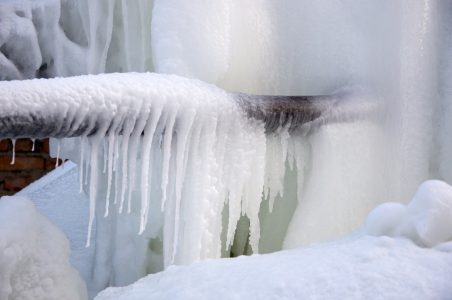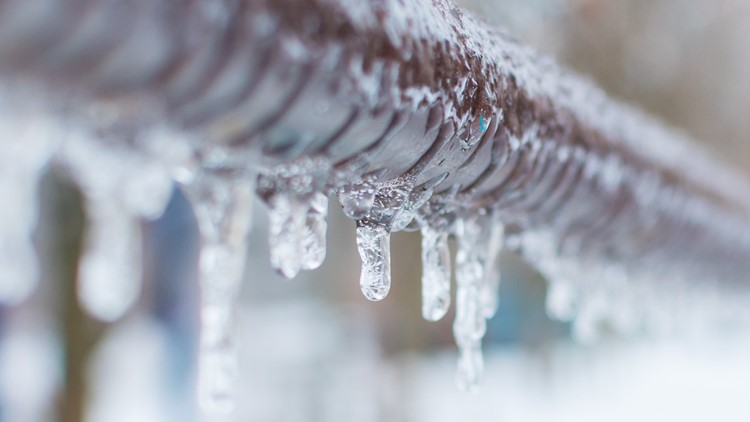Ways to Safeguard Plumbing System from Cold Weather: Essential Tips
Ways to Safeguard Plumbing System from Cold Weather: Essential Tips
Blog Article
On this page in the next paragraphs you will find some decent tips involving Winter Plumbing Precautions: Preventing Frozen Pipes.

Winter can damage your plumbing, particularly by freezing pipelines. Here's how to avoid it from happening and what to do if it does.
Introduction
As temperatures drop, the risk of icy pipes boosts, potentially bring about pricey fixings and water damages. Understanding how to prevent icy pipes is essential for house owners in cool environments.
Understanding Frozen Pipelines
What creates pipelines to ice up?
Pipelines freeze when subjected to temperature levels listed below 32 ° F (0 ° C) for prolonged periods. As water inside the pipelines ices up, it broadens, putting pressure on the pipeline walls and potentially triggering them to break.
Threats and damages
Icy pipelines can result in water supply interruptions, residential or commercial property damages, and expensive fixings. Ruptured pipes can flood homes and trigger considerable architectural damages.
Indicators of Frozen Pipes
Determining icy pipelines early can stop them from rupturing.
How to identify icy pipes
Seek lowered water circulation from faucets, uncommon smells or sounds from pipes, and visible frost on revealed pipelines.
Avoidance Tips
Protecting vulnerable pipes
Wrap pipes in insulation sleeves or make use of heat tape to protect them from freezing temperatures. Focus on pipes in unheated or external areas of the home.
Heating techniques
Maintain interior areas adequately warmed, specifically locations with pipes. Open closet doors to allow cozy air to distribute around pipes under sinks.
Safeguarding Outdoor Pipes
Yard hose pipes and outdoor faucets
Detach and drain yard hose pipes before wintertime. Mount frost-proof spigots or cover exterior faucets with protected caps.
What to Do If Your Pipelines Freeze
Immediate activities to take
If you believe frozen pipelines, keep faucets available to relieve stress as the ice thaws. Utilize a hairdryer or towels taken in hot water to thaw pipes gradually.
Long-Term Solutions
Structural changes
Consider rerouting pipes away from outside walls or unheated locations. Add additional insulation to attics, basements, and crawl spaces.
Updating insulation
Buy top notch insulation for pipelines, attic rooms, and wall surfaces. Correct insulation aids preserve constant temperatures and minimizes the risk of frozen pipes.
Final thought
Stopping icy pipelines requires proactive measures and fast responses. By comprehending the reasons, indicators, and preventive measures, property owners can secure their pipes throughout cold weather.
5 Ways to Prevent Frozen Pipes
Drain Outdoor Faucets and Disconnect Hoses
First, close the shut-off valve that controls the flow of water in the pipe to your outdoor faucet. Then, head outside to disconnect and drain your hose and open the outdoor faucet to allow the water to completely drain out of the line. Turn off the faucet when done. Finally, head back to the shut-off valve and drain the remaining water inside the pipe into a bucket or container. Additionally, if you have a home irrigation system, you should consider hiring an expert to clear the system of water each year.
Insulate Pipes
One of the best and most cost-effective methods for preventing frozen water pipes is to wrap your pipes with insulation. This is especially important for areas in your home that aren’t exposed to heat, such as an attic. We suggest using foam sleeves, which can typically be found at your local hardware store.
Keep Heat Running at 65
Your pipes are located inside your walls, and the temperature there is much colder than the rest of the house. To prevent your pipes from freezing, The Insurance Information Institute suggests that you keep your home heated to at least 65 degrees, even when traveling. You may want to invest in smart devices that can keep an eye on the temperature in your home while you’re away.
Leave Water Dripping
Moving water — even a small trickle — can prevent ice from forming inside your pipes. When freezing temps are imminent, start a drip of water from all faucets that serve exposed pipes. Leaving a few faucets running will also help relieve pressure inside the pipes and help prevent a rupture if the water inside freezes.
Open Cupboard Doors
Warm your kitchen and bathroom pipes by opening cupboards and vanities. You should also leave your interior doors ajar to help warm air circulate evenly throughout your home.

Do you appreciate reading up on How To Avoid Freezing Pipes? Write a short review down the page. We'd be pleased to find out your thoughts about this blog post. We hope to see you back again in the near future. If you enjoyed our article kindly be sure to pass it around. We truly appreciate your readership.
Visit Url Report this page